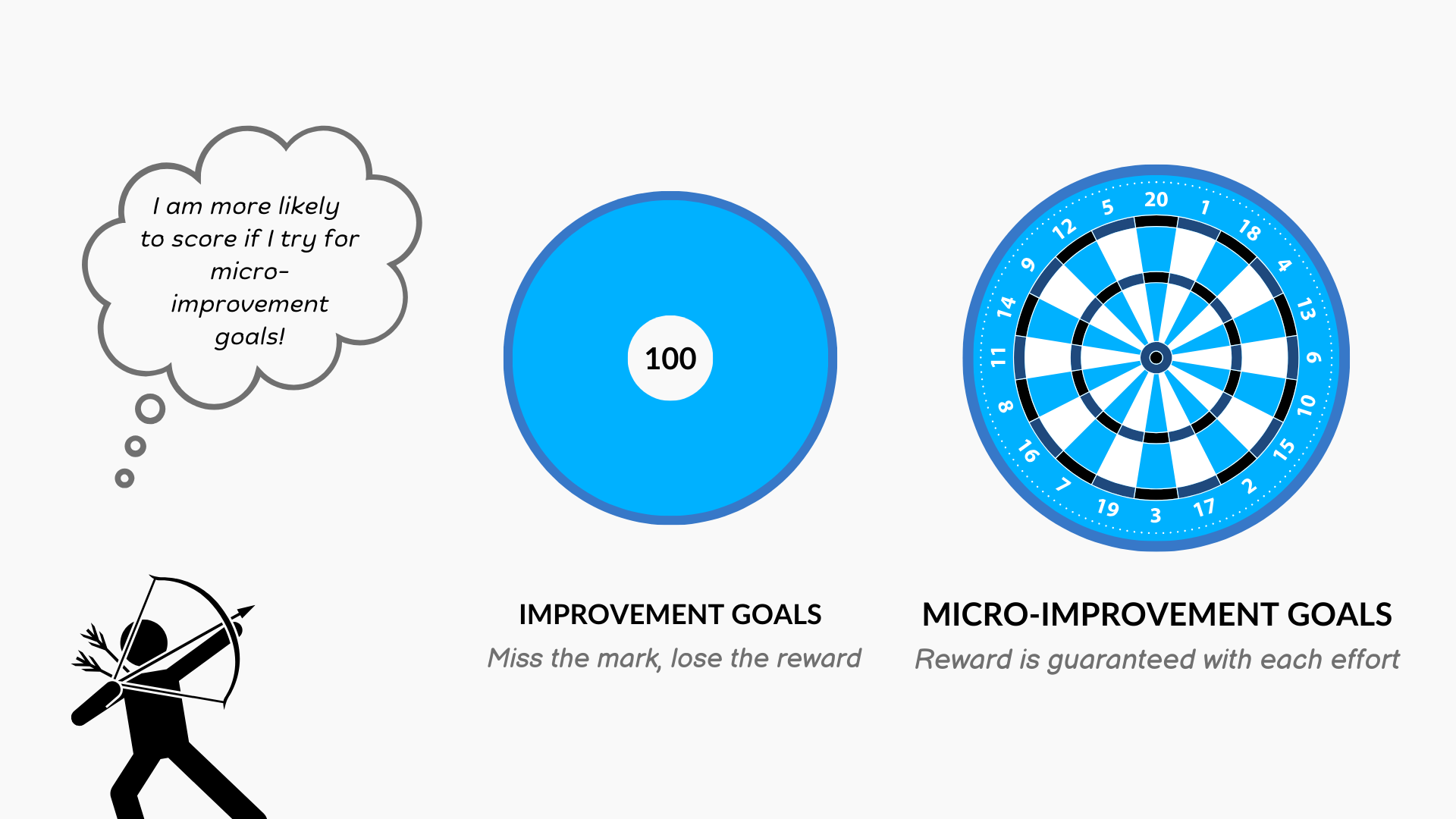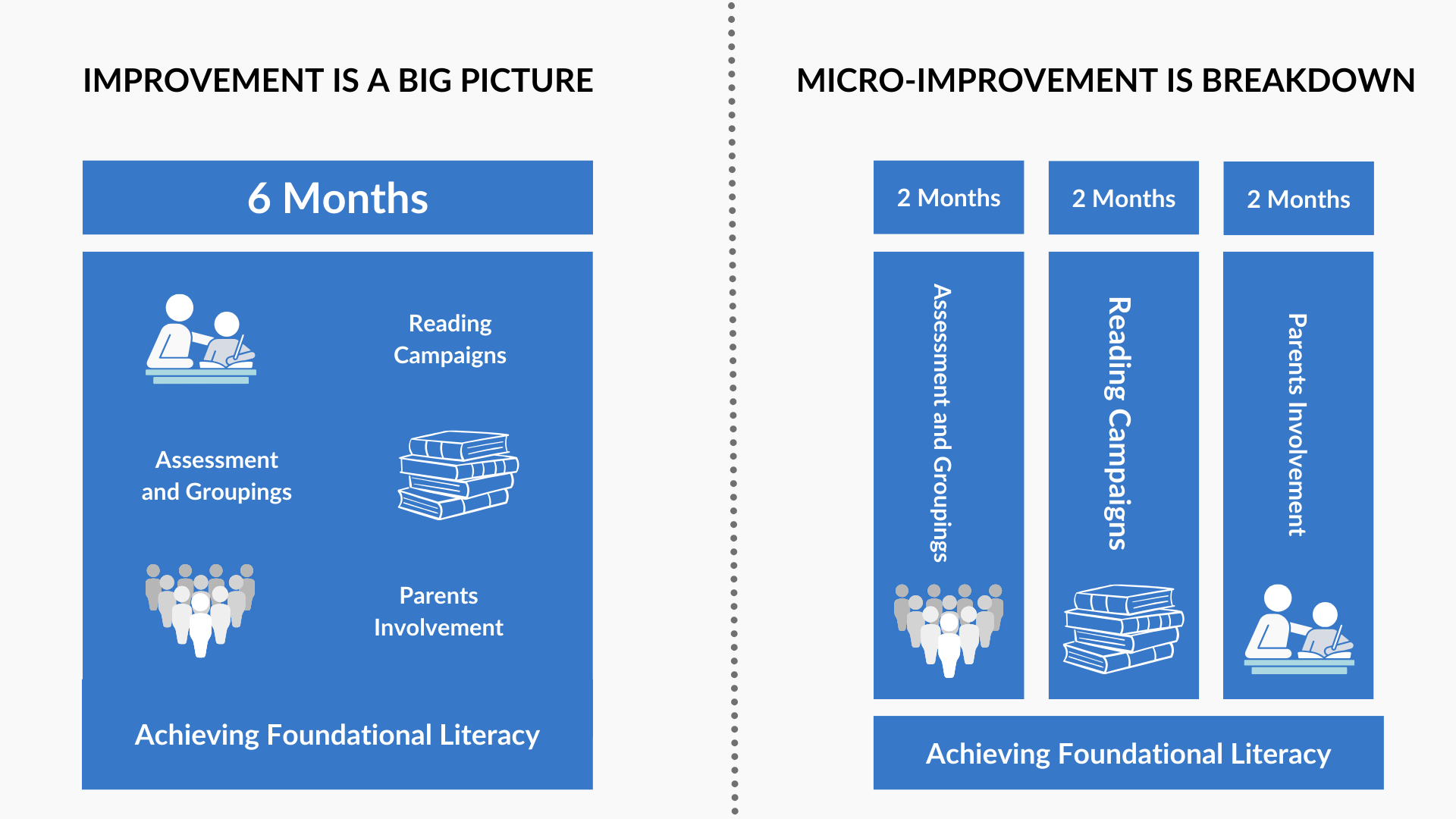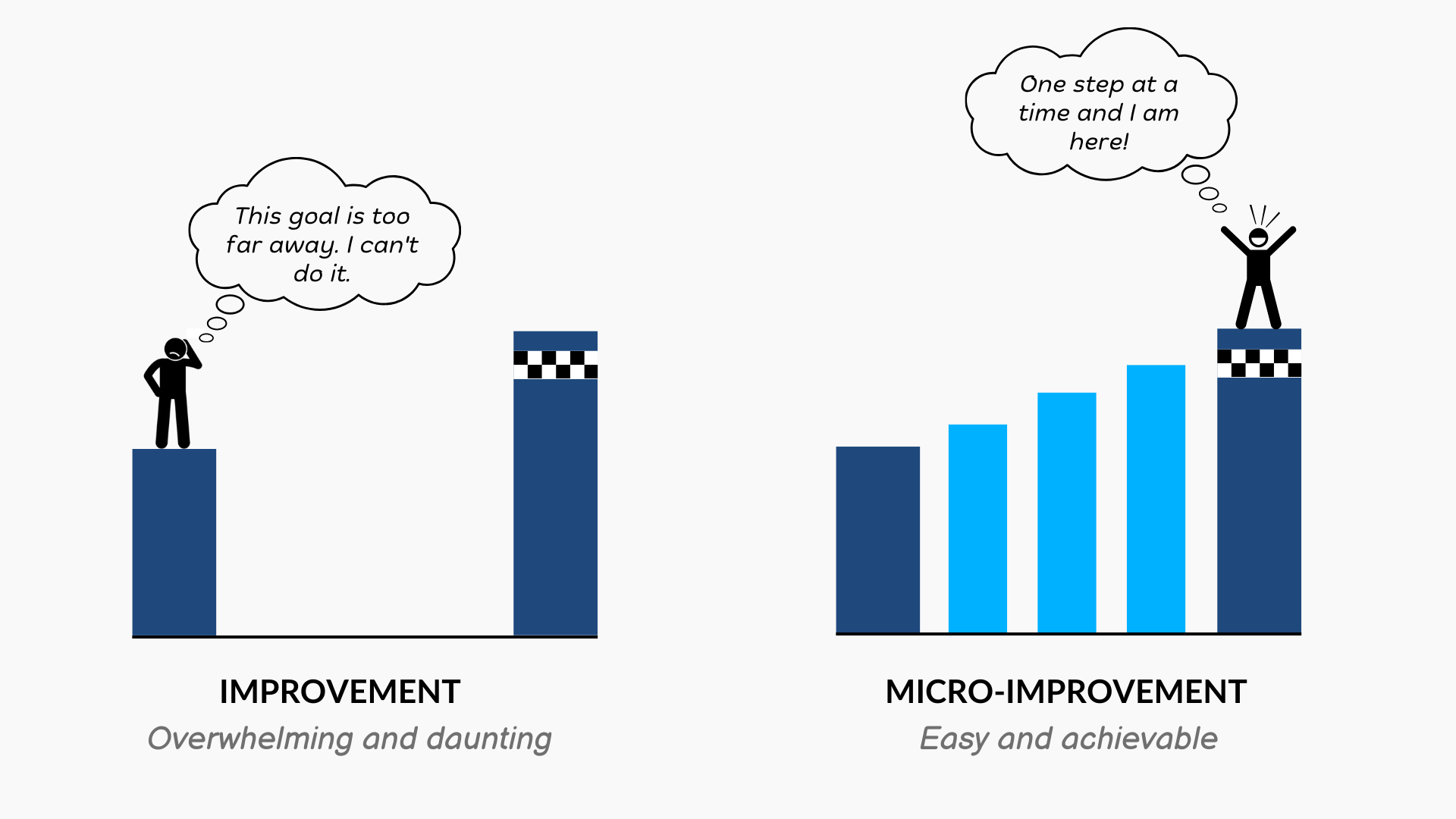In our previous blog, we explored the concept of micro-improvements: small, simple, achievable steps towards big improvement. Now, let’s see what micro-improvement specifically means in education.
Let’s understand this with an example.
A school has 50 students in grade V; at the beginning of the year, only 10 students can read grade V-level text. If this issue is not addressed by the end of the year, 40 students will go to the next grade unprepared to read the text.
The headteacher asks the English teacher to ensure that all students must read at their grade level within six months. Now, this situation might overwhelm the teacher. How would one ensure 80% of the students pick up reading in just six months? This is a daunting task for a teacher. What would you do in this situation?
Anyone who understands the micro-improvement approach would first break down the big tasks into simple, achievable steps.
Here is an example.
The first two months (Assessment and Groupings)
The teacher can conduct a detailed assessment to identify each student’s specific reading levels and challenges. Based on the assessment, the teacher can group students into smaller cohorts according to their reading levels. Once the groups are made as per their current reading level, the teacher can define clear reading goals for each group.
The next two months (Reading exercise and corrections)
In the next two months, after the assessment is done and groups are formed, the teacher can organize daily reading exercises in the classroom, ensuring each student practices reading aloud. During this period, the teacher can also organize ‘reading campaigns’ where students can pick up books from the school library, read independently, and present at the school.
The teacher can regularly assess students’ progress to ensure they are on track to meet their goals.
The last two months (Reinforcement and redirection)
In the last two months, when the students have already done reading-aloud exercises and book readings, they can encourage parents to participate in their children’s reading activities at home. They can provide parents with resources (books, journals, and magazines) and give guidance on how to support their children.
Teachers can create a buddy system where more advanced readers help their peers to ensure that children are reading correctly and that there is someone to support them when they face difficulties. Toward the end of the six months, to ensure that students keep the spirit and read every day, the teacher can acknowledge and celebrate small milestones to motivate and reinforce their progress.
By breaking the task into smaller, manageable steps, the teacher can address the reading challenge in a structured and effective manner. Each micro-improvement ensures all students can read at grade level by the end of six months.
One six-month task is broken down into three two-month tasks. It’s easy, simple, and achievable. This is micro-improvement.
The best thing about micro-improvement is that:
It breaks down larger goals into smaller, achievable steps making the process less overwhelming for teachers and students.
Regularly achieving small goals builds momentum and leads to continuous improvement in student outcomes.
Teachers make interventions to students’ specific needs and ensure that each student receives the support they need.
Frequent monitoring and celebrating small successes keep students engaged and motivated.
This blog is the second part of a three-part blog series exploring the concept of micro-improvement. Click the button below to read the second blog in the series

Sushant Kumar
A Political Science graduate from Banaras Hindu University and a Masters in Education from Azim Premji University, Sushant Kumar is a passionate writer, editor and facilitator. Currently, he is part of the strategic functions team at Mantra4Change. He takes pride in creating engaging and impactful communication strategies, leveraging his background in development and education. He can be reached at sushant@mantra4change.org.





